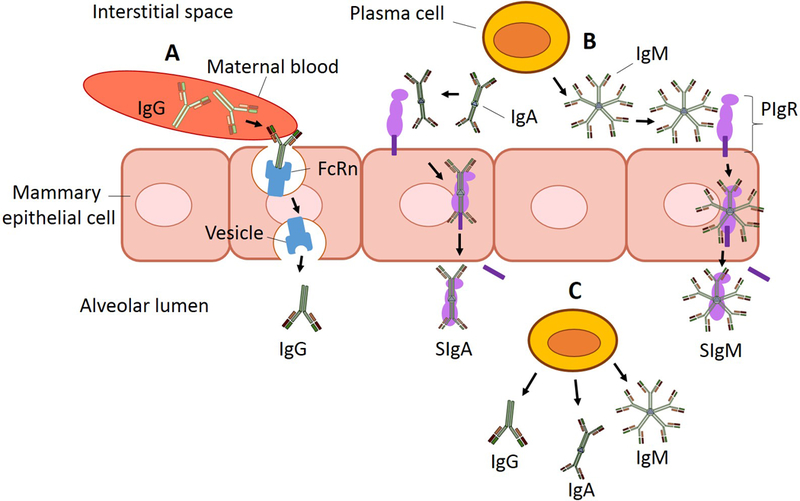Fig. 2.

Schematization of the origin of IgG, secretory IgA (SIgA), IgA, secretory IgM (SIgM), and IgM in human milk. (A) Monomeric IgG is likely transported from maternal blood after binding to neonatal Fc receptors (FcRn) on the basolateral membrane of mammary epithelial cells and transported via vesicles to the alveolar lumen. (B) Plasma cells produce dimeric IgA and pentamer IgM in the interstitial spaces of the mammary gland. IgA and IgM bind to the secretory component (SC) of polymeric immunoglobulin receptor (PIgR) on the basolateral membrane of the mammary epithelial cell and the IgA-PIgR complex and IgM-PIgR complex travel to the apical membrane. PIgR is cleaved by a protease (unknown), releasing SC, which covalently binds to IgA or IgM, creating the complexes secretory IgA (SIgA) and secretory IgM (SIgM), which are secreted across the apical membrane. (C) Milk plasma cells can produce monomeric IgG, dimeric IgA and polymeric IgM in human milk inside the alveolar lumen and contribute to production of IgG, as well as IgA and IgM (without the SC).
